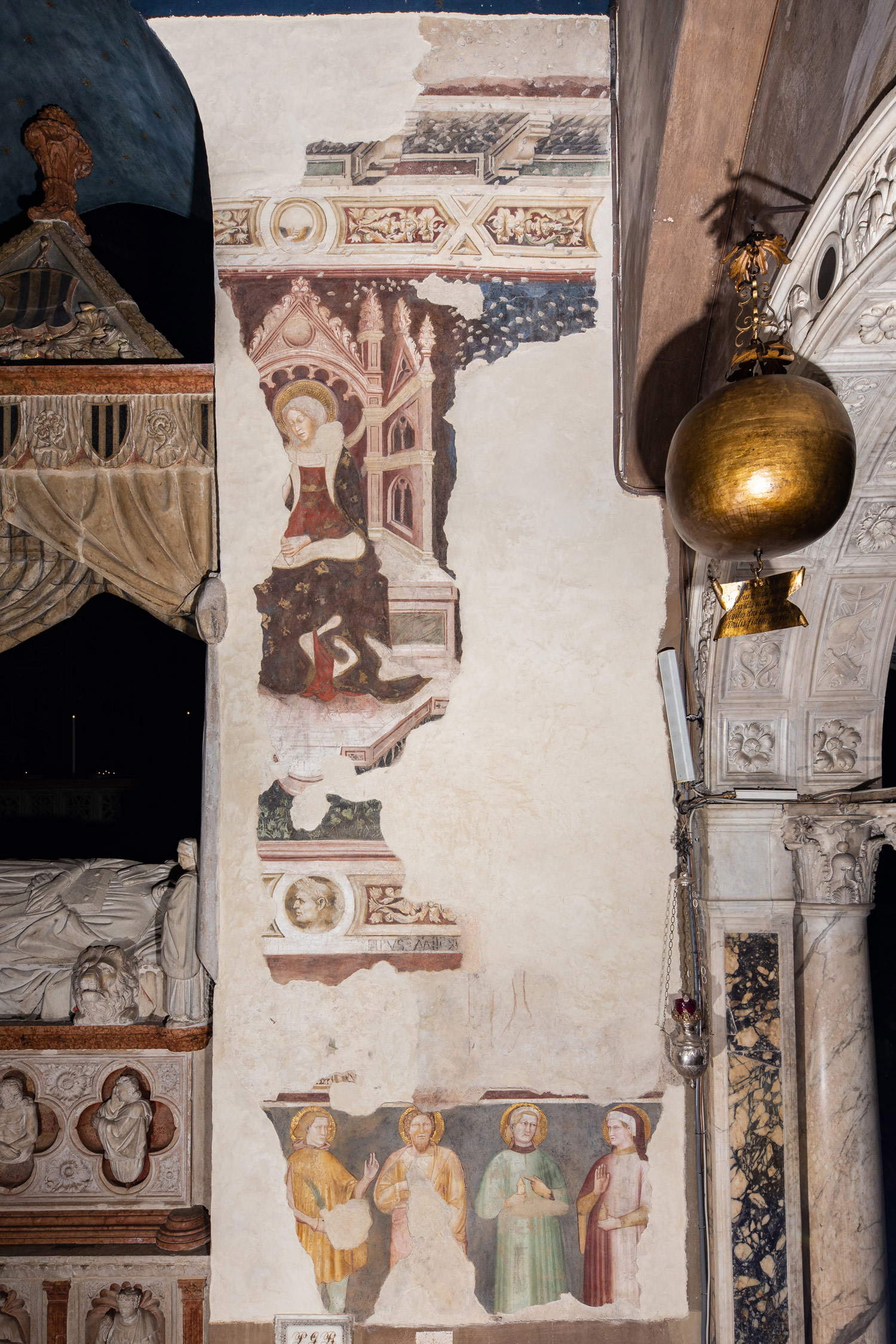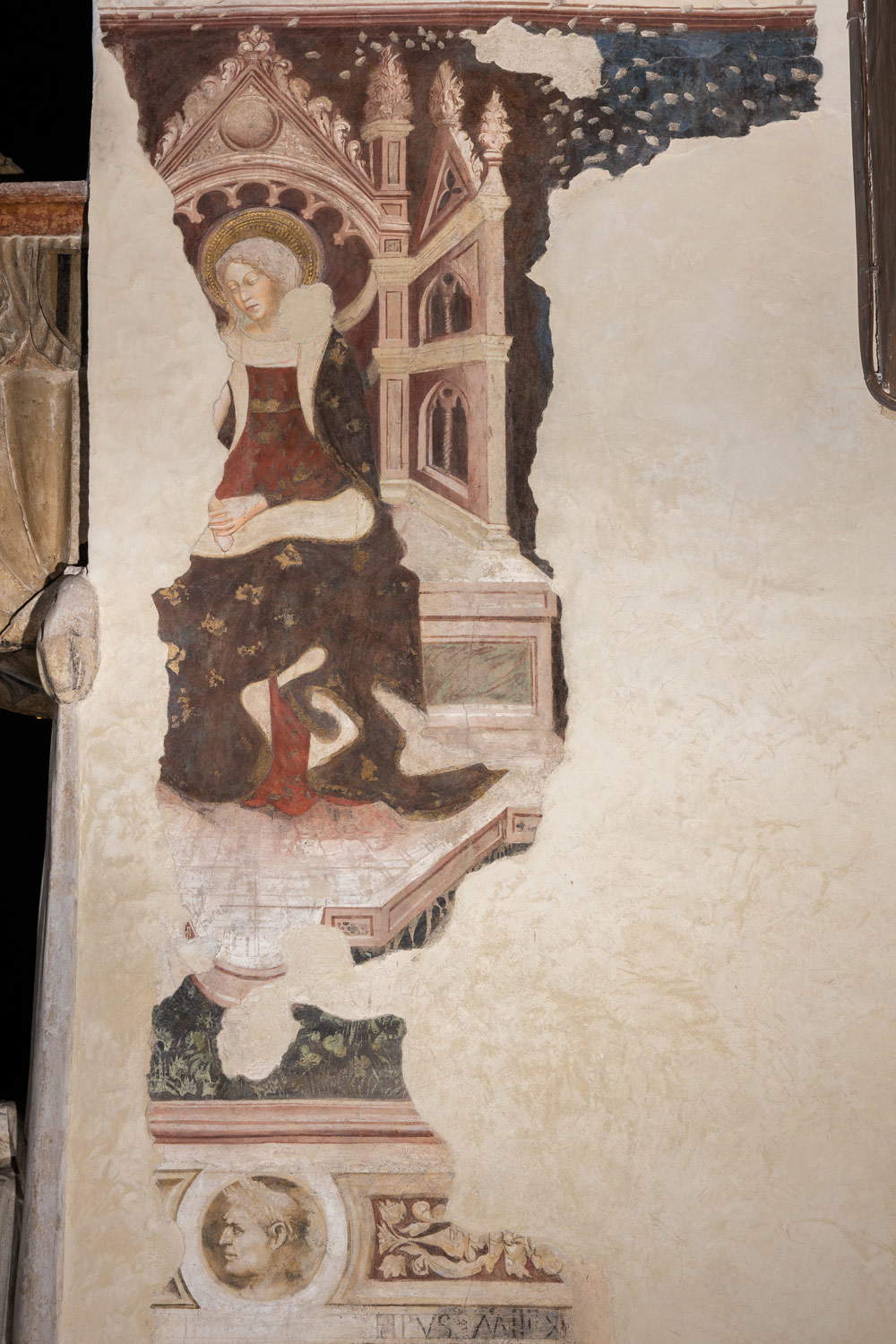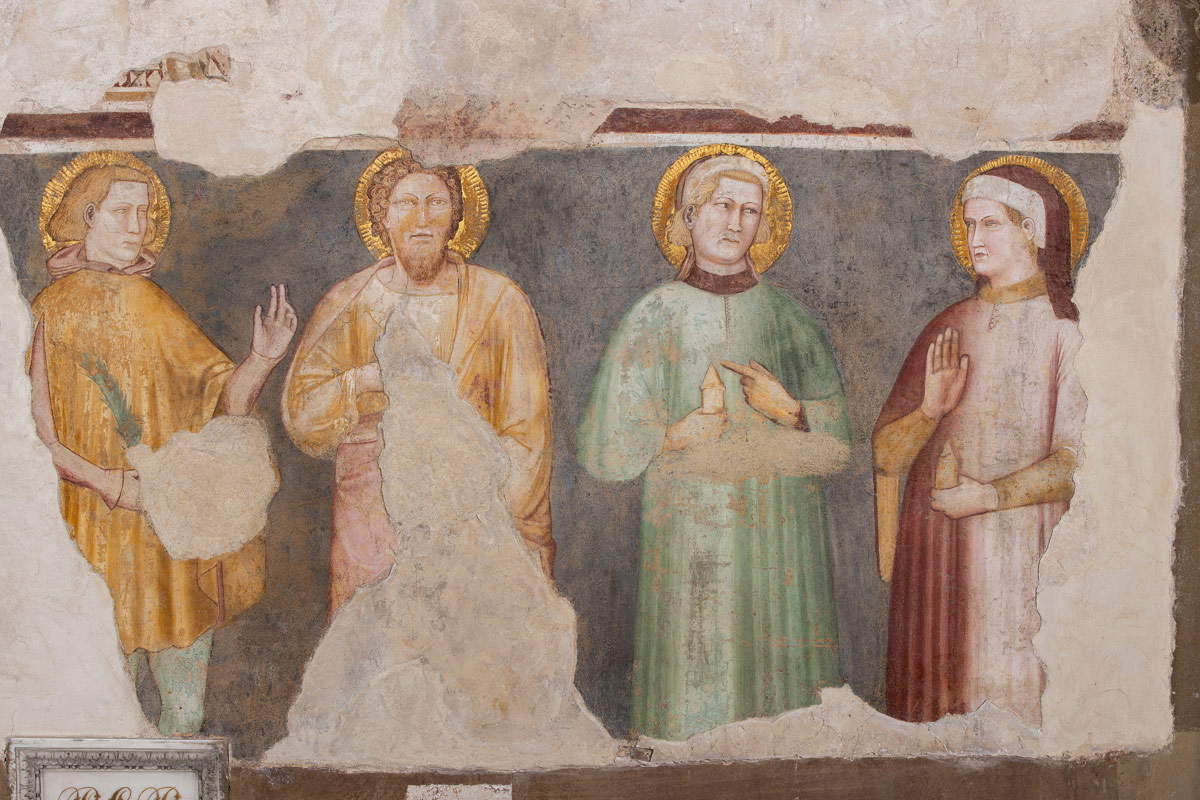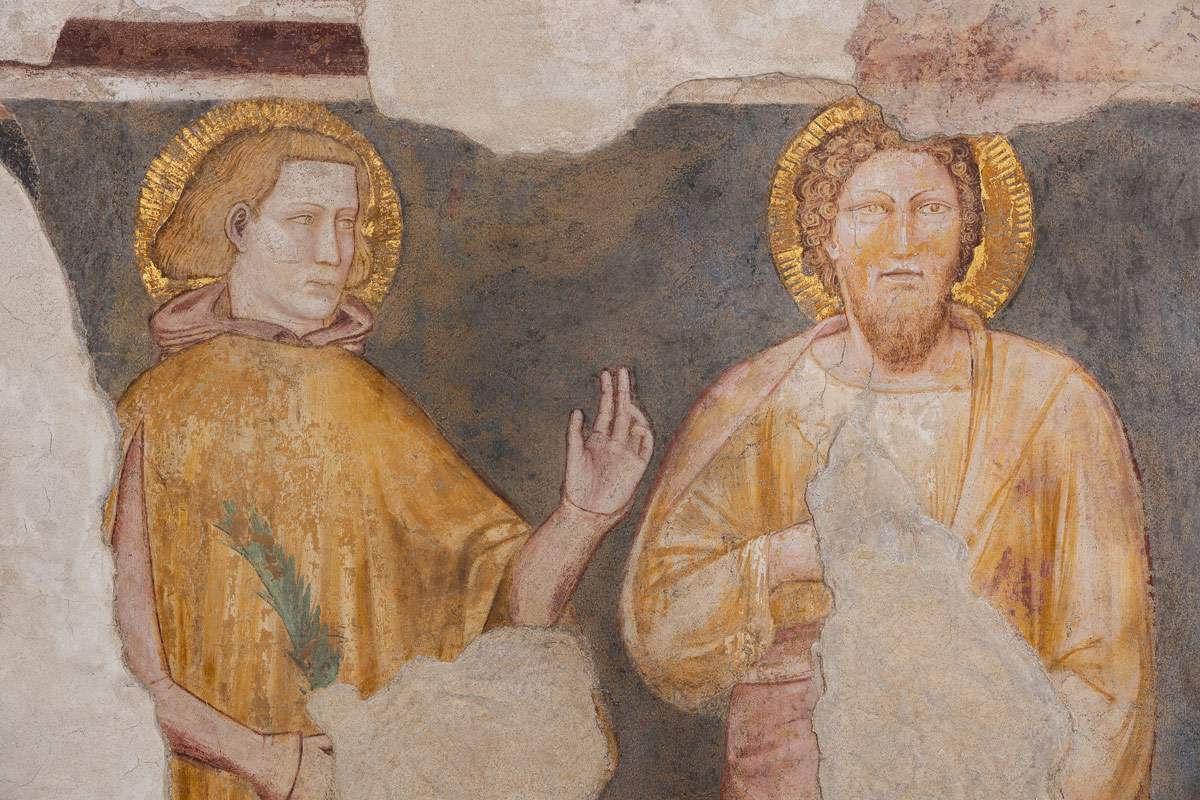Padua, new discoveries and hypotheses on the 14th-century frescoes in the Basilica of St. Anthony. Photos
More discoveries at the Basilica of St. Anthony in Padua. Some restoration work conducted in the chapel of the Madonna Mora (the same one in which, in 2015, the young scholar Giacomo Guazzini had identified a precious testimony of the activity of Giotto in Padua, the Glorification of the Virgin among prophets and angels hitherto believed to be the work of a follower of Altichiero da Zevio), which constitutes the first nucleus on which the entire basilica was built, have made it possible to recover the legibility of some medieval frescoes, so much so that for the first time a hypothesis has been advanced for their possible authors. The interventions, financed by the Tabacchi family and aimed at restoring the original colors to the frescoes located to the left of the chapel’s entrance passage, thus led to the “discovery” of a new portion of frescoed plaster. According to scholar Cristina Guarnieri of the Department of Cultural Heritage of the University of Padua, the author of the lower register of the work could be Stefano di Benedetto da Ferrara (news between 1349 and 1376), an artist also active in the city of the Saint, while for the upper register the name proposed is that of the Maestro di Roncaiette.
The Paduan activity of Stefano di Benedetto is mentioned in Michele Savonarola’s Libellus de magnificis ornamentis regie civitatis Padue, where the artist is mentioned for having painted the scenes with the miracles of St. Anthony in the Chapel of the Ark, and again Giorgio Vasari, in his Lives of Mantegna and Carpaccio, assigns him one more work in the Basilica, a “Virgin Mary who is called of the Pillar,” a work that has been heavily reworked today, although not to the point of totally obscuring the typical features of Stefano di Benedetto’s art (delicate complexions, light and soft hues, affectionate attitudes, childlike faces).
The fresco assigned to him is the one on the lower level, and it depicts four saints (including Saint Bartholomew, recognizable by the iconographic attribute of the knife, and Saints Cosmas and Damian, who wear stiff-collared tunics, vaio headdresses, and hold the jar of ointments that identifies their profession as doctors).
Above it, on the other hand, we find a fragmentary Madonna Enthroned with Child, originally facing an anonymous patron on her right, and bordered by several frames decorated with plant motifs and medallions with portraits of Roman emperors. Thanks to the restorations, the composition has been brought to light, but not only that: an inscription has been brought back to legibility that would place the painting around 1410. For this Madonna, Professor Guarnieri advanced, as anticipated, the name of the Master of Roncaiette, a painter active in Padua in the late 14th and early 15th centuries, whose main work is the polyptych in the church of San Fidenzio in Roncaiette di Ponte San Nicolò, near Padua. According to Guarnieri, the Paduan Madonna represents the apex of the anonymous artist’s career, the moment of closest proximity to the art of Gentile da Fabriano, who exerted a strong influence on him. “Even if the attribution is not confirmed by subsequent analysis,” reads a note, “it would be an important testimony to the Umbrian Renaissance, which is still firmly rooted in late Gothic figurative culture, but which by now preludes Humanism and the art of Mantegna and Donatello, of which important examples had not yet been identified in the Basilica del Santo. With this discovery, however, early 15th-century painting also comes to be documented with a fresco of high quality.”
Meanwhile, studies continue in the Basilica of the Saint, not only on the frescoes in the Chapel of the Madonna Mora (in fact, reconnaissance is going on), but also on the Chapter House: here, various diagnostic analyses are allowing scholars to verify the state of conservation of the frescoes and plasters present. In the multidisciplinary project, partially financed by the CIRCe Center (Interdepartmental Research Center for the Study of Cementitious Materials and Hydraulic Binders), which has signed an agreement with the Venerable Ark of St. Anthony, researchers who are part of the Center and the European infrastructure IPERION CH (MOLAB) have collaborated regarding diagnostic techniques on the paintings and plasters, theCNR-ISAC Institute (Padua Unit) regarding environmental monitoring and measurements, and from the Department of Cultural Heritage at UNIPD regarding geophysical and multispectral surveys.
The latter project, explains Professor Gilberto Artioli, director of the CIRCe Center, “had two main objectives: on the one hand, the in-depth investigation of the visible fourteenth-century surfaces and those covered by the seventeenth-century plaster of the central portion of the eastern part. These investigations were carried out using state-of-the-art diagnostic techniques capable of penetrating to various depths beneath the surface layers. On the other, monitoring of the climatic situation of the hall and the state of conservation and degradation of the frescoes. In particular, we focused on the two portions of plaster discovered during the works carried out before 1900, which reveal two fragments of a crucifixion, probably executed by Giotto in the hall. Therefore, hypothesizing from the two fragments what the structure of the crucifixion and the position of the crucified Christ figure might have been, the investigations focused on the upper part of the wall, and in particular at the height of the false tympanum frescoed in the mid-17th century, where the Franciscan coat of arms is visible. In fact, geognostic investigations carried out in depth on the masonry have shown that there is no evidence of openings or infill that would suggest the removal of the original fresco to make room for doors, windows, or architectural passages.”
Based on the investigations carried out with laser interferometry (DHSPI), it was found that there are numerous points where the visible portions of the fresco extend continuously under the seventeenth-century plaster; moreover, further investigations carried out with very high-frequency imaging (THz imaging) revealed the presence of microstructures referable to a halo with grooves and golden reflector, quite similar to those measured on the halo present in the visible part of the fresco. The area studied should therefore refer to the halo of the head of Christ on the cross, which, therefore, would still be present in the central area of the painting. The investigations thus revealed that, in all likelihood, there are still large portions of the Giottesque fresco yet to be recovered under the surface layer.
Below are photos of the frescoes in the Madonna Mora Chapel.
 |
| The wall with the frescoes |
 |
| The Madonna attributed to the Master of Roncaiette |
 |
| The saints attributed to Stefano di Benedetto da Ferrara |
 |
| Padua, new discoveries and hypotheses on the 14th-century frescoes in the Basilica of St. Anthony. Photos |
Warning: the translation into English of the original Italian article was created using automatic tools. We undertake to review all articles, but we do not guarantee the total absence of inaccuracies in the translation due to the program. You can find the original by clicking on the ITA button. If you find any mistake,please contact us.





























